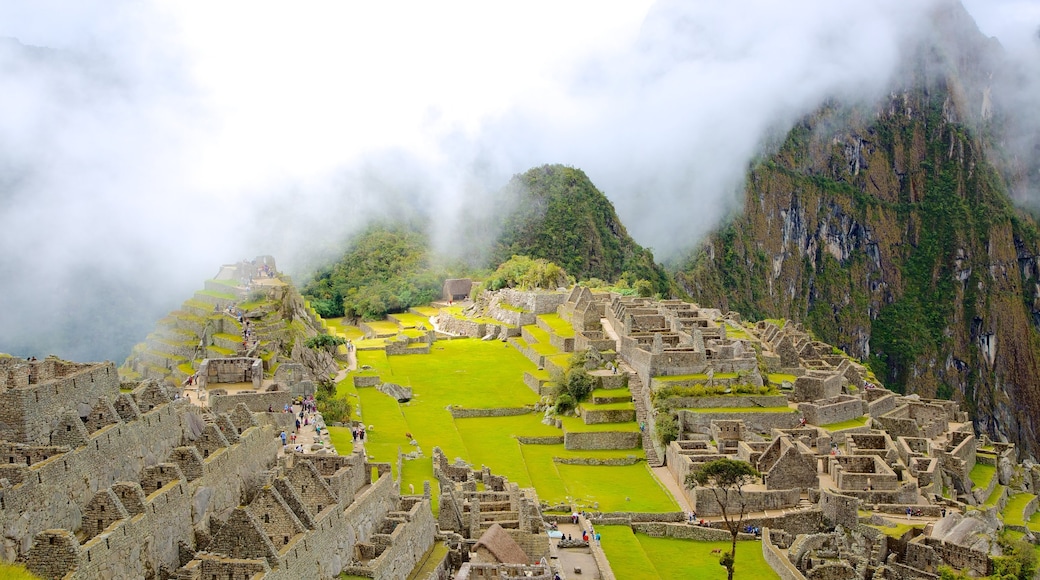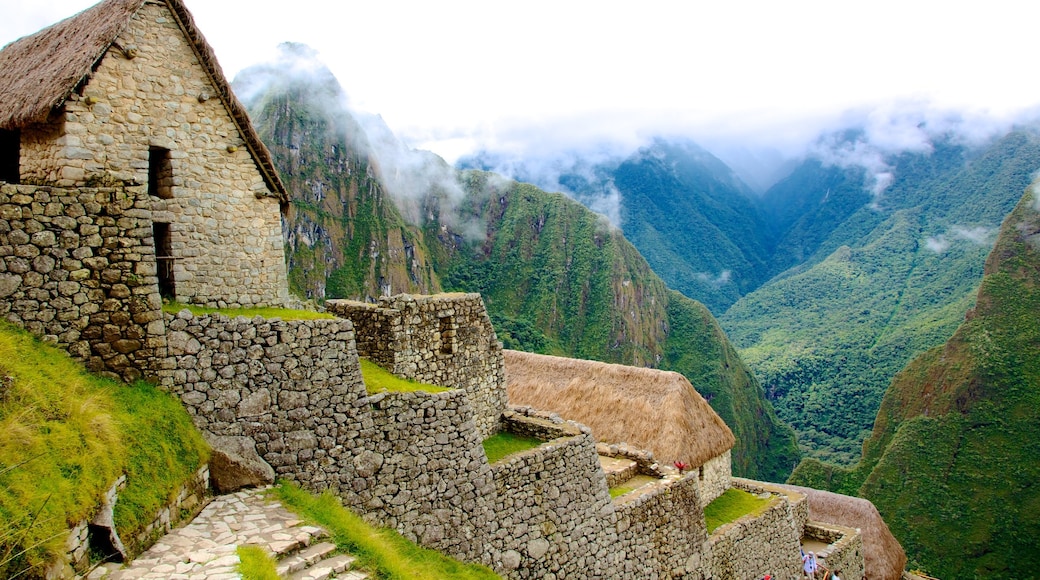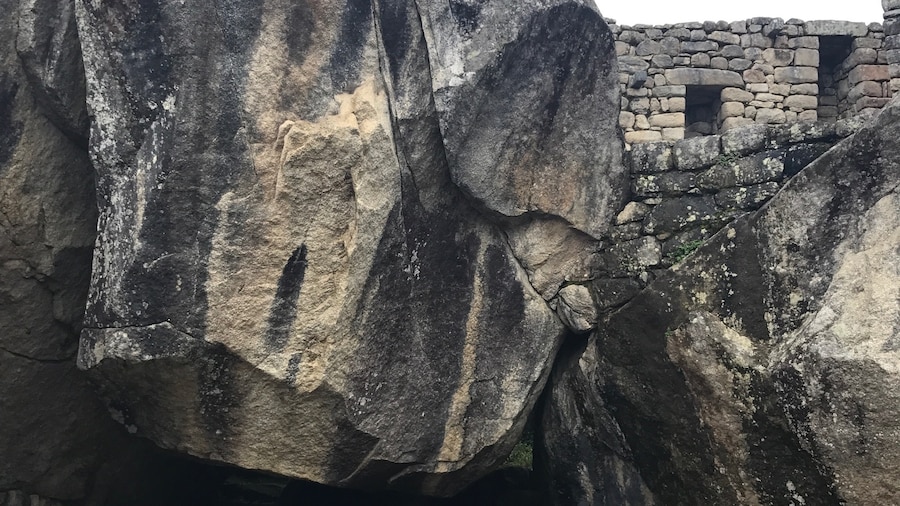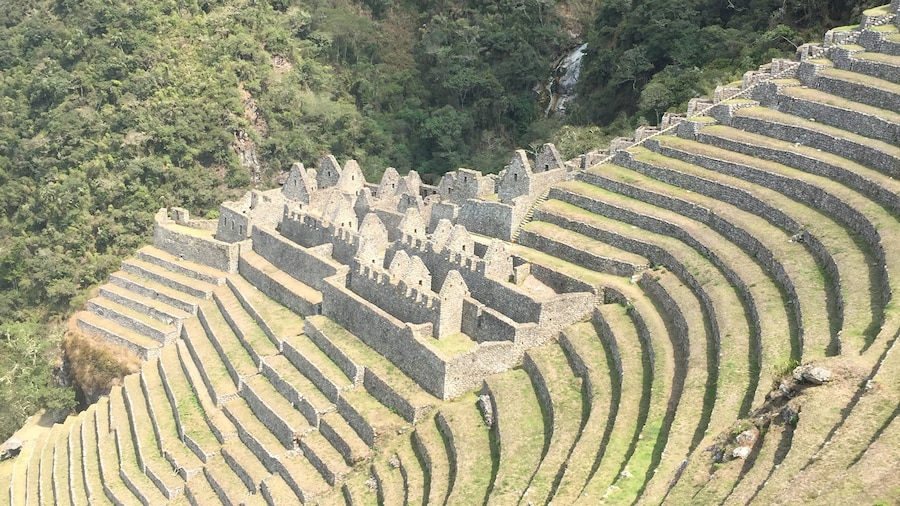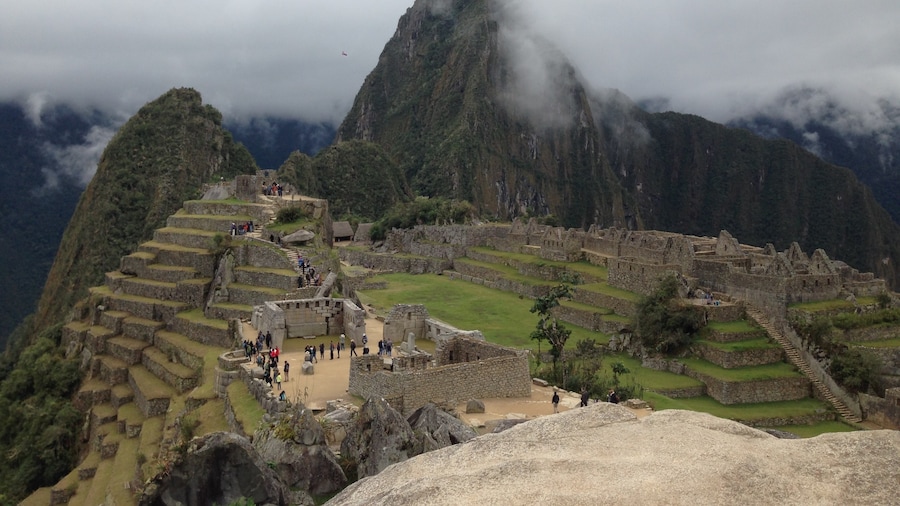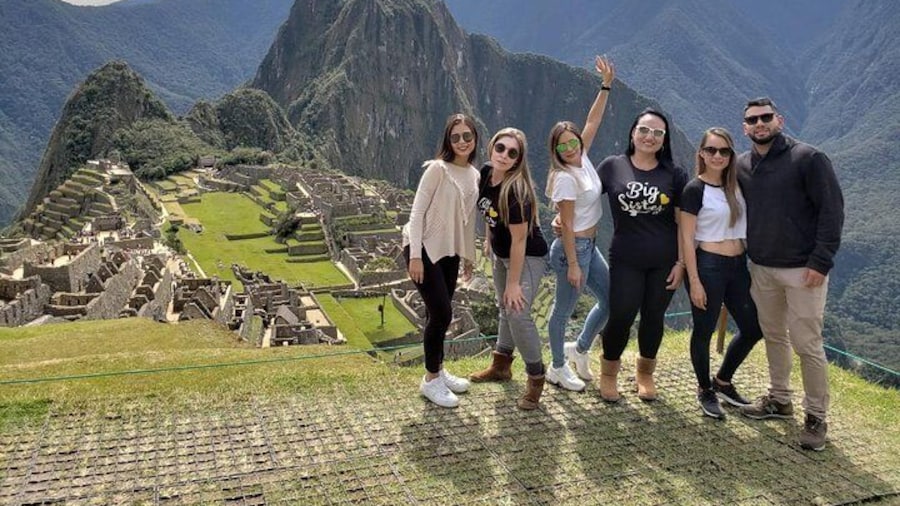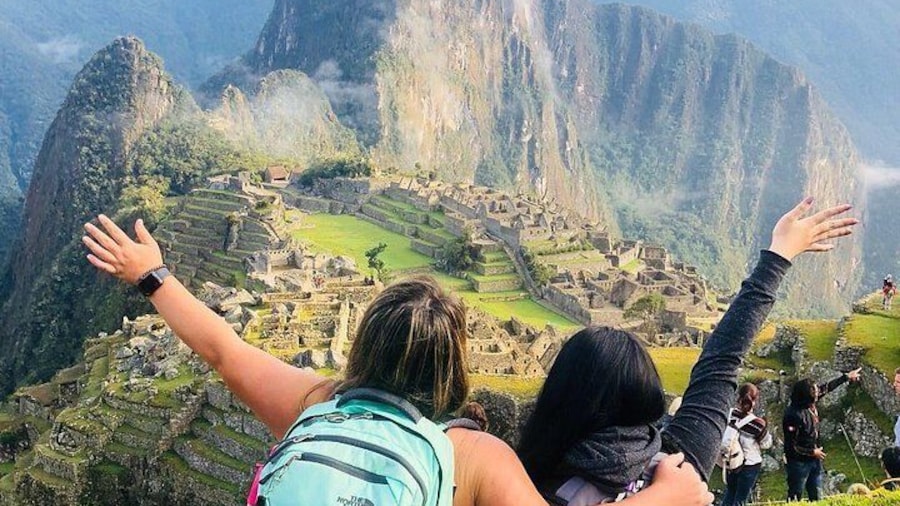Machu Picchu is a terraced citadel with remains of temples, palaces, fountain and altars. The fabled “Lost City of the Incas” is thought to have been constructed by the Incas around 1450 and is an architectural marvel.
The citadel sits 7,970 feet (2,430 meters) above sea level in the Sacred Valley northwest of Cusco. It remains a mystery what purpose Machu Picchu served and why it was abandoned. In the centuries that followed its abandonment, the jungle hid the isolated city from sight until it was uncovered in 1911.
Walk up to the Guardhouse and Funeral Rock to get the full overview of the mystical city with its comical free-roaming llamas. Visit the semicircular Temple of the Sun, the Palace of the Princess and the Temple of the Three Windows. Don’t miss the Intihuatana, a carved stone marking the winter solstice.
Due to the thin air and humidity, it is a good idea to pace yourself as you explore the sacred buildings. Notice how, without the aid of advanced tools, the Incas cut and stacked the huge stone blocks to fit precisely.
Make sure to plan ahead to visit the world-famous city in the sky, as there is only a limited amount of visitors allowed on-site and getting there takes 3 to 4 hours. Take the train to Aguas Calientes from Poroy, a small village near Cusco, or from Ollantaytambo further down the line. The luxury option is to take a one-day package tour from Cusco with a guide. Purchase your Machu Picchu entrance ticket in Aguas Calientes before you take the bus or hike up the mountain. If you also want to climb Huayna Picchu and Machu Picchu Mountain, book special tickets through the government website for Machu Picchu.Students receive a discount.
Bring lunch, water and an information booklet, as there are few facilities on the mountain. Aim to arrive just before sunrise to see Machu Picchu lit in full glory.
